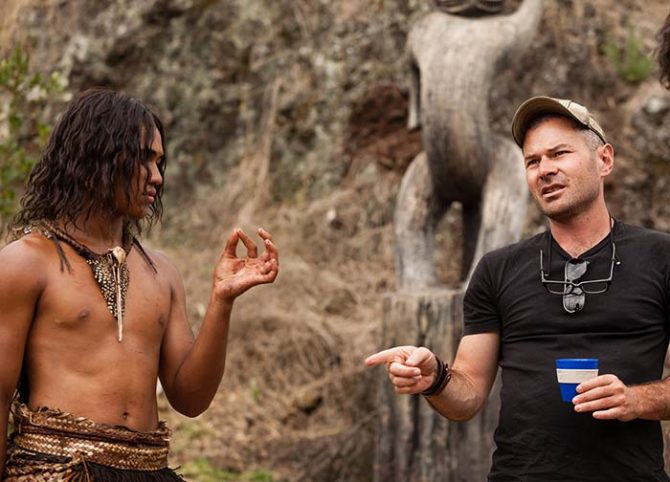I've studied a few languages over the years including te reo Māori and one thing my teachers always encouraged was watching films in the language as it helped develop an ear for what native speakers sound like, as well as helping with vocabulary and grammar. In fact, this is how I first discovered Jackie Chan movies when I was learning Chinese.
Learners of te reo Māori are lucky enough to have Māori Television as a resource for hearing te reo Māori spoken, even if no one else in their household, school or place of work is fluent. But in terms of Saturday night movies on DVD, there's very little to choose from.
t's not difficult to find movies with a sprinkling of te reo Māori, here and there - films like Whale rider, Boy, The Piano and a few others. But a movie where the only English language you'll find is in the subtitles? Now, that is a rarity - but that's exactly what you get with 2014 action movie, The Dead Lands.
With impressively gory deaths and terrific fight choreography The Dead Lands is sort of a cross between Apocalypto, (Mel Gibson's brutal Meso-American set action film), a Bruce Lee movie, and a mafia revenge drama. It's closest cinematic equivalent in New Zealand terms might be the Geoff Murphy directed classic, Utu.
Director Toa Fraser, was good enough to answer a few questions for me about the te reo Māori aspect of the film.
Why was the decision made to have the dialogue in te reo, rather than in English? How do you think it added to the film?
Honestly, we just thought it would be much cooler to do it in te reo. Glenn Standring always wrote it to be translated. Te Manahau Morrison wrote a beautiful translation, very heightened and theatrical that the cast found thrilling and challenging. It suited the fact that we were making an indigenous martial arts movie that looked to Hollywood but also to Asia for inspiration. Kurosawa was a particular inspiration.
Did this require the actors, or you, to learn more te reo?
The cast had a very varied level of confidence in te reo. We did cast it in such a way that people like Te Kohe Tuhaka and Raukura Turei could lead within the group, and guide the others who were less confident. For me I don't speak te reo so of course it was very challenging but I had great support from Tainui Stephens and Jamus Webster.
Are there specific challenges with making a movie completely in te reo Maori or is it pretty much the same as making one in English?
It was a joy to make a movie that embraced tikanga Māori as a paramount part of the process. We said karakia everyday, used Māori terms onset (e.g. tīmata/kōkiri for action, kāti for cut).
I still say "kāti" on set. I directed an episode of Penny Dreadful in Ireland last year with Eva Green and Rory Kinnear. Rory said, "We just keep going until you say kāti."
What are your thoughts on the use of te reo Māori, generally?
I look forward to the day when we are all comfortable in New Zealand/Aotearoa speaking English and Māori as much as we can, and all schools are equally well-resourced for English and Māori language education. I think it is ridiculous that, for instance, a very well-resourced central Auckland school has some 15, 000 books in English, a few in Japanese, one French and erm, some in Māori. What's that about?
Languages are cool. Let's celebrate them.
Find out more
- Plays and films by Toa Fraser in our catalogue
- All DVDs in our collection featuring te reo Māori
- Wikipedia list of films using te reo Māori




Add a comment to: The Dead Lands: Making a movie in te reo Māori